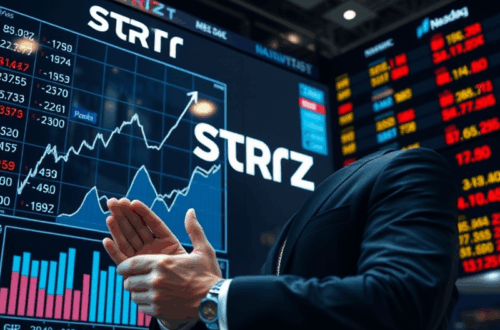
JPM Stock: An Investor’s Guide to JPMorgan Chase & Co.

Hello there, wonderful reader! Today, let’s explore one of the giants of the financial world: JPMorgan Chase & Co., commonly known by its stock ticker JPM. This isn’t just any bank; it’s one of the largest and most influential financial institutions globally. If you’re curious about what makes JPM a key player and what to consider as an investor, you’ve come to the right place!
JPMorgan Chase operates across a wide spectrum of financial services, serving individuals, small businesses, corporations, and governments. Its sheer scale and breadth of operations make it a complex but fascinating company to understand. Let’s break down what makes JPM tick.
Understanding JPMorgan Chase’s Core Businesses
JPM is structured into several major business segments. Consumer & Community Banking serves millions of customers with traditional banking services like checking and savings accounts, mortgages, and credit cards. This is the face of JPM that most people interact with daily.
The Corporate & Investment Bank is a powerhouse in global finance, providing services like investment banking, market making, and treasury services to large corporations and institutional clients. This segment is crucial for facilitating major financial transactions and capital raising around the world.
Commercial Banking focuses on serving mid-sized businesses, offering lending, treasury, and payment solutions. Asset & Wealth Management provides investment and wealth management services to individuals and institutions, helping them grow and preserve their wealth.
JPM’s Position in the Global Financial Landscape
As one of the largest banks by assets, JPMorgan Chase plays a critical role in the global financial system. Its extensive network and diverse service offerings give it a significant competitive advantage. It’s often seen as a bellwether for the health of the financial sector and the broader economy.
Its size and reach mean it’s involved in major financial activities worldwide, from facilitating international trade to advising on large corporate mergers and acquisitions. This global presence is a key factor in its stability and growth potential.
Analyzing JPM’s Financial Performance
When looking at JPM’s financials, investors often focus on key metrics like net interest income, non-interest revenue, loan growth, and asset quality. As a bank, its performance is heavily influenced by interest rates and the overall economic environment.
Net interest income, the difference between what the bank earns on loans and pays on deposits, is a major revenue driver. Non-interest revenue comes from fees for services like investment banking, asset management, and transaction processing. Tracking these revenue streams provides insight into the bank’s operational health.
JPMorgan Chase is known for returning capital to its shareholders through dividends and share buybacks. For many income-focused investors, JPM’s consistent dividend payments are a significant attraction. The bank’s ability to pay dividends is subject to regulatory approval, ensuring it maintains sufficient capital levels.
Share buybacks can also enhance shareholder value by reducing the number of outstanding shares, potentially increasing earnings per share. JPM’s approach to capital return is a key consideration for investors.
Factors Influencing JPM Stock Price
The price of JPM stock is influenced by a variety of factors. Macroeconomic conditions, such as interest rate changes, inflation, and economic growth, have a significant impact on banking profitability. Regulatory changes in the financial industry can also affect JPM’s operations and profitability.
Company-specific news, such as earnings reports, management changes, and strategic initiatives, also play a crucial role. Global events and geopolitical stability can also affect investor sentiment towards large financial institutions like JPM.
Risks and Challenges for JPMorgan Chase
Despite its strong position, JPM faces various risks. Credit risk, the risk that borrowers may default on loans, is inherent in banking. Market risk, related to fluctuations in financial markets, can impact its trading and investment portfolios.
Operational risks, including cybersecurity threats and internal control failures, are also significant concerns for a large financial institution. Regulatory and compliance risks are ongoing, requiring significant resources to navigate the complex legal landscape.
Opportunities for Growth and Innovation
JPMorgan Chase continues to pursue growth opportunities. This includes expanding its presence in key markets, investing in technology and digital transformation to improve efficiency and customer experience, and developing new products and services.
The bank is also investing in areas like payments technology and sustainable finance, adapting to evolving customer needs and market trends. Its scale allows it to invest heavily in innovation to stay competitive.
The Importance of Management and Leadership
The leadership team at JPMorgan Chase, particularly CEO Jamie Dimon, is highly regarded in the financial industry. Their strategic decisions, risk management practices, and ability to navigate complex environments are critical to the bank’s success. Understanding the management’s vision and execution is important for investors.
JPM’s Role in Economic Cycles
As a major financial institution, JPM’s performance is closely tied to economic cycles. During periods of economic expansion, loan growth tends to be strong, and asset quality is generally good. In contrast, economic downturns can lead to increased loan defaults and reduced demand for financial services.
JPM’s ability to manage risk and maintain a strong balance sheet through different economic environments is a key aspect of its resilience.
Considering JPM for Your Portfolio
Investing in JPM stock means investing in a leading global financial institution with diverse revenue streams and a strong track record. It can offer exposure to the financial sector and potential for both capital appreciation and dividend income.
However, it’s essential to consider your own investment goals, risk tolerance, and time horizon. The banking sector can be sensitive to economic shifts and regulatory changes. Doing your own research or consulting with a financial advisor is always recommended before making investment decisions.
Conclusion: A Pillar of the Financial World
In conclusion, JPMorgan Chase (JPM) is a cornerstone of the global financial system. Its vast operations, diverse business segments, and strong financial position make it a significant player. While it faces inherent risks associated with the banking industry and economic cycles, its scale, management expertise, and focus on innovation position it to navigate the future. For investors seeking exposure to a leading financial institution, JPM remains a key stock to consider.



